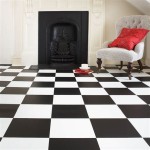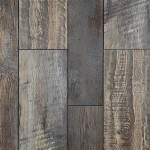Vinyl flooring is a popular choice for many homeowners, but it needs a few extra steps to ensure it’s installed properly. Adding waterproof underlayment for your vinyl flooring is one such step that can protect your flooring from moisture damage and extend its life. In this article, we’ll cover the benefits of using waterproof underlayment for vinyl flooring and how it can help you make the most of your floors.
What is Waterproof Underlayment?
Waterproof underlayment is a thin, waterproof membrane that is placed between the subfloor and your vinyl flooring. It helps protect your flooring from moisture and other liquid spills, as well as providing extra cushioning and soundproofing. It also helps to prevent mold and mildew, which is particularly important in areas with high humidity. The underlayment also helps to even out any irregularities in the subfloor, which can cause the vinyl flooring to buckle or ripple over time.
Advantages of Using Waterproof Underlayment for Vinyl Flooring
There are a number of advantages to using waterproof underlayment for your vinyl flooring. The main advantage is that it helps to protect your flooring from water damage and other liquid spills. With the extra layer of protection, your flooring will be better protected from moisture, which can cause warping and other damage over time. This can help to extend the life of your floors, as well as keeping them looking their best for longer.
Waterproof underlayment also helps to reduce noise from upstairs neighbors or other sources. The extra layer of cushioning helps to absorb sound, making it easier to keep your home quiet and peaceful. This can be especially beneficial in multi-story homes, where sound can easily travel through the floors.
Finally, waterproof underlayment helps to even out any irregularities in the subfloor, which can cause the vinyl flooring to buckle or ripple over time. With the extra layer of protection, such irregularities are less likely to cause damage to your floors and make them look their best for longer.
Types of Waterproof Underlayment for Vinyl Flooring
There are a few different types of waterproof underlayment available for vinyl flooring. The type you choose will depend on the type of flooring you’re installing and the environment in which it will be installed. Some of the most common types include:
- Foam Underlayment: This type of underlayment is lightweight and provides extra cushioning and soundproofing. It’s also an economical choice.
- Vapor Barrier Underlayment: This type of underlayment is designed to protect against moisture and spills. It’s typically made of plastic or rubber.
- Fiberglass Underlayment: This type of underlayment is designed to provide extra cushioning and soundproofing, as well as providing protection from moisture damage.
How to Install Waterproof Underlayment for Vinyl Flooring
Installing waterproof underlayment for vinyl flooring is relatively straightforward, but it’s important to follow the manufacturer’s instructions carefully. Generally speaking, you’ll need to:
- Clean and prepare the subfloor before installing the underlayment
- Cut the underlayment to fit, making sure to leave a few inches of extra material around the edges
- Roll out the underlayment and seal the seams with tape
- Install the vinyl flooring according to the manufacturer’s instructions
Conclusion
Adding waterproof underlayment for your vinyl flooring is an important step in ensuring it’s installed properly. The extra layer of protection helps to protect your flooring from moisture damage, as well as providing extra cushioning and soundproofing. It also helps to even out any irregularities in the subfloor, which can cause the vinyl flooring to buckle or ripple over time. With the right type of waterproof underlayment, you can make sure your floors look their best for longer.















Related Posts








